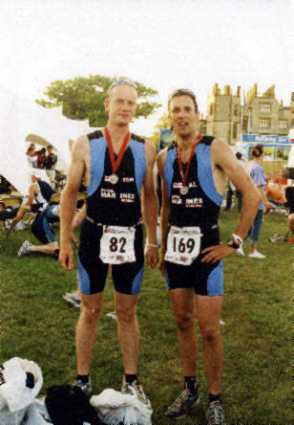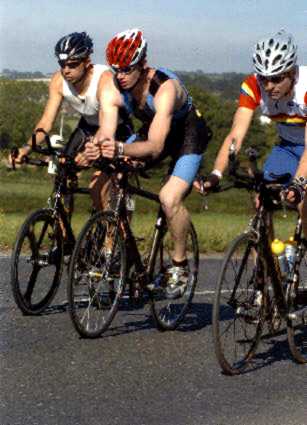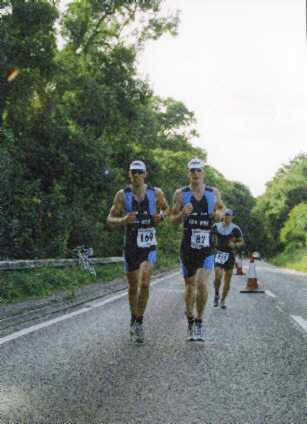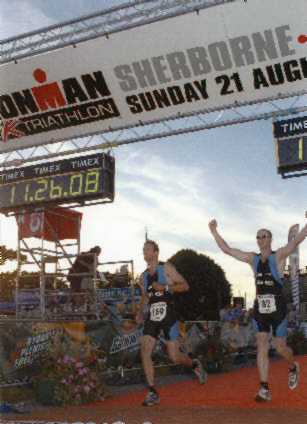Endurance Event ’RMR Ironman 2005’, UK, August 2005
RMR City of London
It was great news to hear that the Ulysses Trust were to give a grant of £180 to a two man Royal Marines Reserve team to compete at the first ever UK Ironman. As an international, televised endurance event, attracting thousands of spectators the Ironman presented an ideal opportunity to promote interest in the Reserves. It comprises a 2.4 mile swim, immediately followed by a 112 mile bike leg and ends with a marathon 26.2 mile run. The fact that the course was described by organisers as "undulating" but by eventual winner, Brian Rhodes, (a veteran of numerous Ironman races) as "the toughest one he’d ever done", meant that ‘Royal’ had his work cut out.
Although the Ironman is not an expedition per se, there are many similarities. The process of training, purchasing of specialist equipment, nutrition and race preparation, planning and execution started twelve months before the start gun. Juggling the day job (both lawyers), triathlon training, RMR commitments and normal life demanded considerable flexibility and frequently a less than ideal training programme. Many hours were spent in the pool, learning the correct swimming technique. Hundreds of training miles were cycled on the turbo trainer and on the open road for up to 6 hours at a time and naturally we spent a great deal of time banging out the miles in trainers.
A New Zealand swim coach gave me a critical piece of advice when he said, "In an Ironman the race really starts at the half way point in the marathon and until that point, you are merely travelling to the start. Make sure to get to the ‘start’ feeling ‘fresh’.
 |
 |
|
Swim Bike However, it wasn’t until after 105 miles that I really began to suffer. Cramp. Ease off, stretch, ignore your competitive instincts as people come past. You’ll catch them on the run. 112 mile bike leg: Mne de Pelet 6 hours 20 mins; Mne Walford 6 hours 20 mins. |
|
 |
 |
Run
Remember: 13.1miles until the ‘start’. I
felt anything but fresh. Mne Walford caught up with me five miles into the
marathon. Up the pace, run as a team. The support for ‘Royal’ was phenomenal
and we looked the part in our matching RMR sponsored tri-suits as we moved up
the field. We were both on the verge of cramp for most of the second half of the
run, but we kept reeling people in: overtaking anaesthetised the pain. Mile 21:
the notorious climb up Babylon Hill, not a single person was running. It was at
moments like this that having ‘Royal Marines’ printed on your back really
counted: ‘Royal’ runs up hills! The last couple of miles: adrenaline,
anticipation and euphoria. We’d overtaken around 100 people. 800m to go: the
support was overwhelming. We finally crossed the line coming 165th=
in a field of 1227: sheer elation as a whole year of training and focus
culminated in 11hrs 26mins and 09secs of measured turmoil. (26.2 mile marathon
run Mne de Pelet: 3 hours 53 mins; Mne Walford 3 hours 48 mins)
Once again our thanks goes to the Trust for backing a Royal Marines Reserve team at this international event.